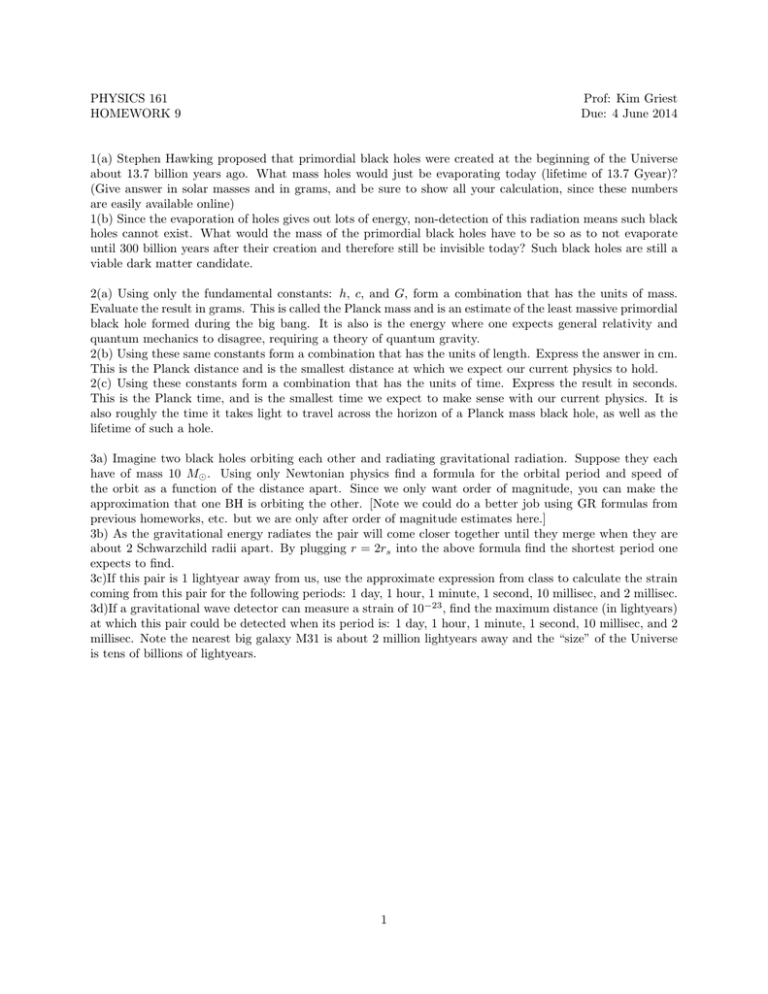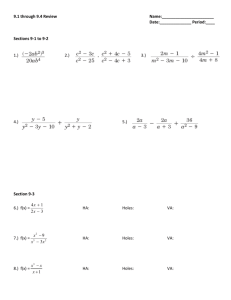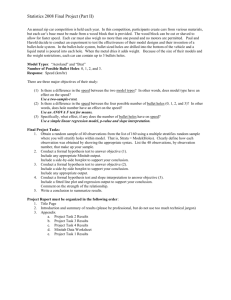PHYSICS 161 Prof: Kim Griest HOMEWORK 9 Due: 4 June 2014
advertisement

PHYSICS 161 HOMEWORK 9 Prof: Kim Griest Due: 4 June 2014 1(a) Stephen Hawking proposed that primordial black holes were created at the beginning of the Universe about 13.7 billion years ago. What mass holes would just be evaporating today (lifetime of 13.7 Gyear)? (Give answer in solar masses and in grams, and be sure to show all your calculation, since these numbers are easily available online) 1(b) Since the evaporation of holes gives out lots of energy, non-detection of this radiation means such black holes cannot exist. What would the mass of the primordial black holes have to be so as to not evaporate until 300 billion years after their creation and therefore still be invisible today? Such black holes are still a viable dark matter candidate. 2(a) Using only the fundamental constants: h, c, and G, form a combination that has the units of mass. Evaluate the result in grams. This is called the Planck mass and is an estimate of the least massive primordial black hole formed during the big bang. It is also is the energy where one expects general relativity and quantum mechanics to disagree, requiring a theory of quantum gravity. 2(b) Using these same constants form a combination that has the units of length. Express the answer in cm. This is the Planck distance and is the smallest distance at which we expect our current physics to hold. 2(c) Using these constants form a combination that has the units of time. Express the result in seconds. This is the Planck time, and is the smallest time we expect to make sense with our current physics. It is also roughly the time it takes light to travel across the horizon of a Planck mass black hole, as well as the lifetime of such a hole. 3a) Imagine two black holes orbiting each other and radiating gravitational radiation. Suppose they each have of mass 10 M . Using only Newtonian physics find a formula for the orbital period and speed of the orbit as a function of the distance apart. Since we only want order of magnitude, you can make the approximation that one BH is orbiting the other. [Note we could do a better job using GR formulas from previous homeworks, etc. but we are only after order of magnitude estimates here.] 3b) As the gravitational energy radiates the pair will come closer together until they merge when they are about 2 Schwarzchild radii apart. By plugging r = 2rs into the above formula find the shortest period one expects to find. 3c)If this pair is 1 lightyear away from us, use the approximate expression from class to calculate the strain coming from this pair for the following periods: 1 day, 1 hour, 1 minute, 1 second, 10 millisec, and 2 millisec. 3d)If a gravitational wave detector can measure a strain of 10−23 , find the maximum distance (in lightyears) at which this pair could be detected when its period is: 1 day, 1 hour, 1 minute, 1 second, 10 millisec, and 2 millisec. Note the nearest big galaxy M31 is about 2 million lightyears away and the “size” of the Universe is tens of billions of lightyears. 1







